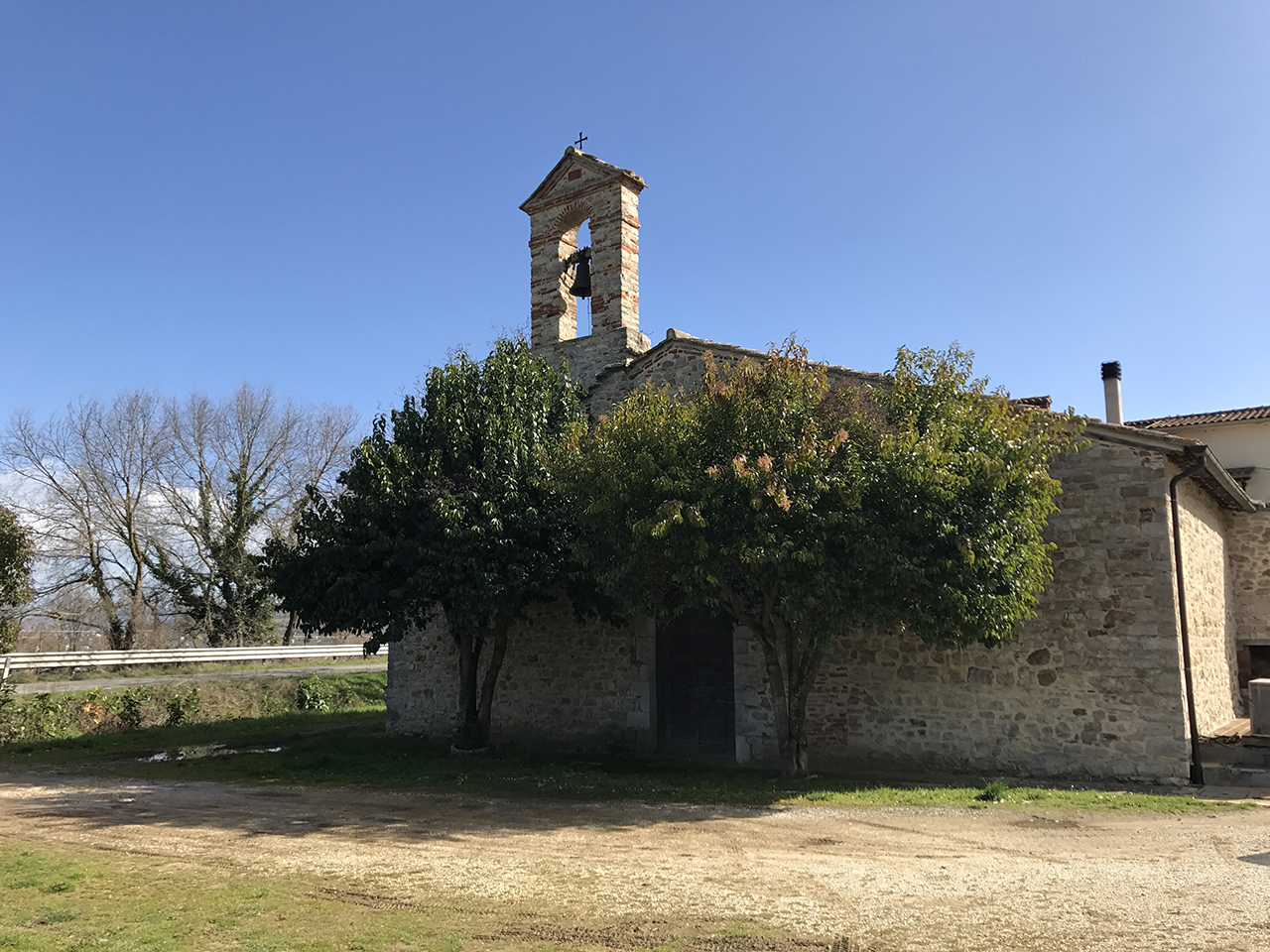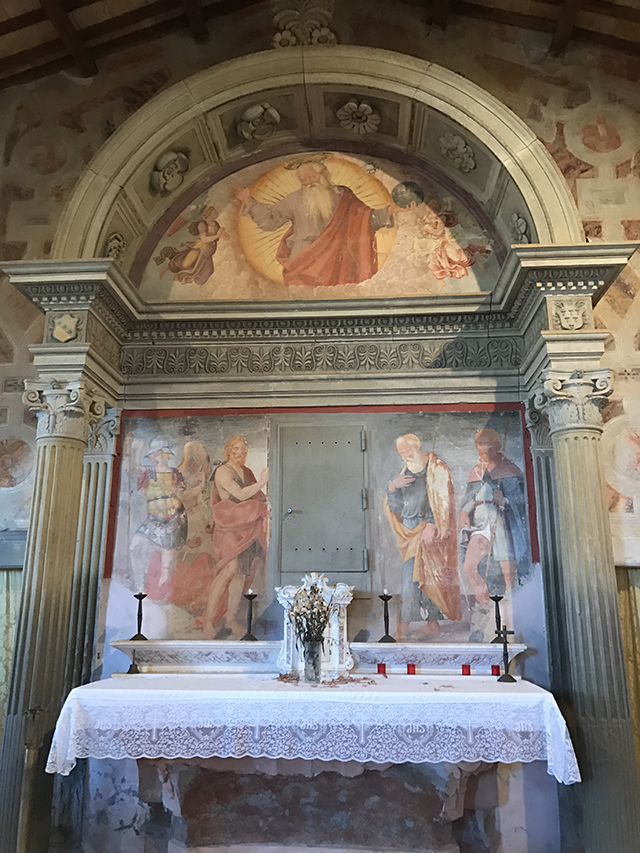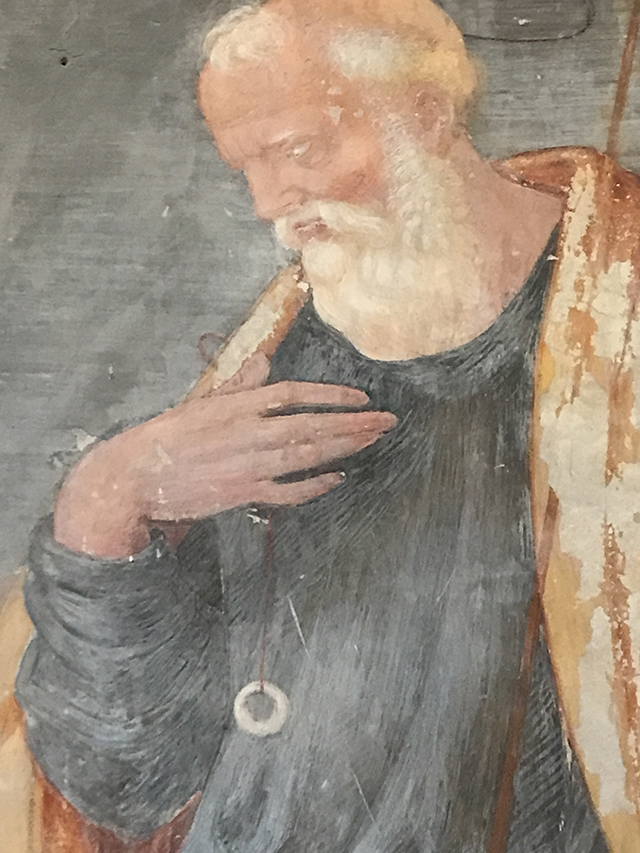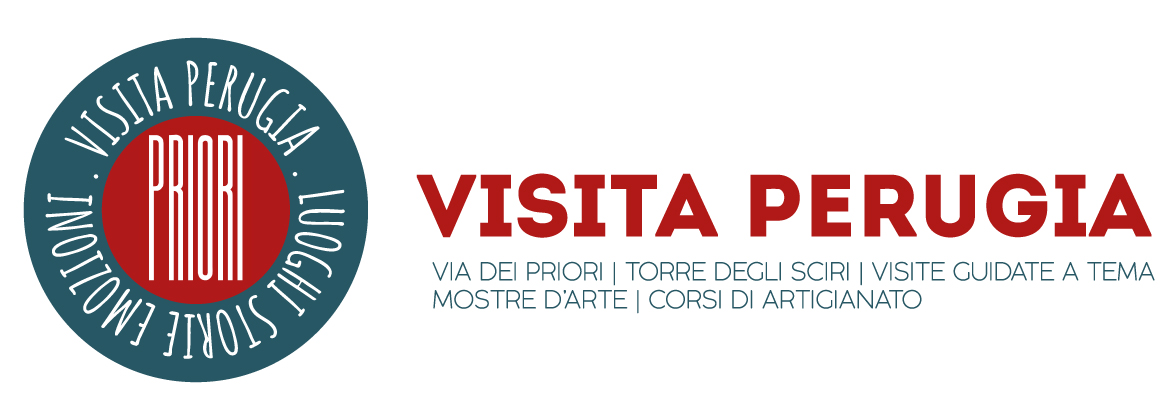Via dei Priori and Lake Trasimeno. There is a close connection between the city of Perugia and Lake Trasimeno, not surprisingly in ancient times it was called the Lake of Perugia. The importance of Trasimeno for the city of Perugia is testified by two tiles of the Fontana Maggiore, a symbolic monument of Perugia: one reproduces two fishermen with fish, another the Nymph of Trasimeno.
The tile is located in the lower tank where the activities of the year are represented month by month, in February we have the representation of fishing with the two fishermen. It is no coincidence that this activity was in February, in fact, it was the month of greatest catch, and it was mainly fishing for fish. The image of the roach fish, now disappeared from the lake at the beginning of the nineteenth century, is reproduced in the arch of the door.
The tile is located in the lower tank where the activities of the year are represented month by month, in February we have the representation of fishing with the two fishermen. It is no coincidence that this activity was in February, in fact, it was the month of greatest catch, and it was mainly fishing for fish. The image of the roach fish, now disappeared from the lake at the beginning of the nineteenth century, is reproduced in the arch of the door.
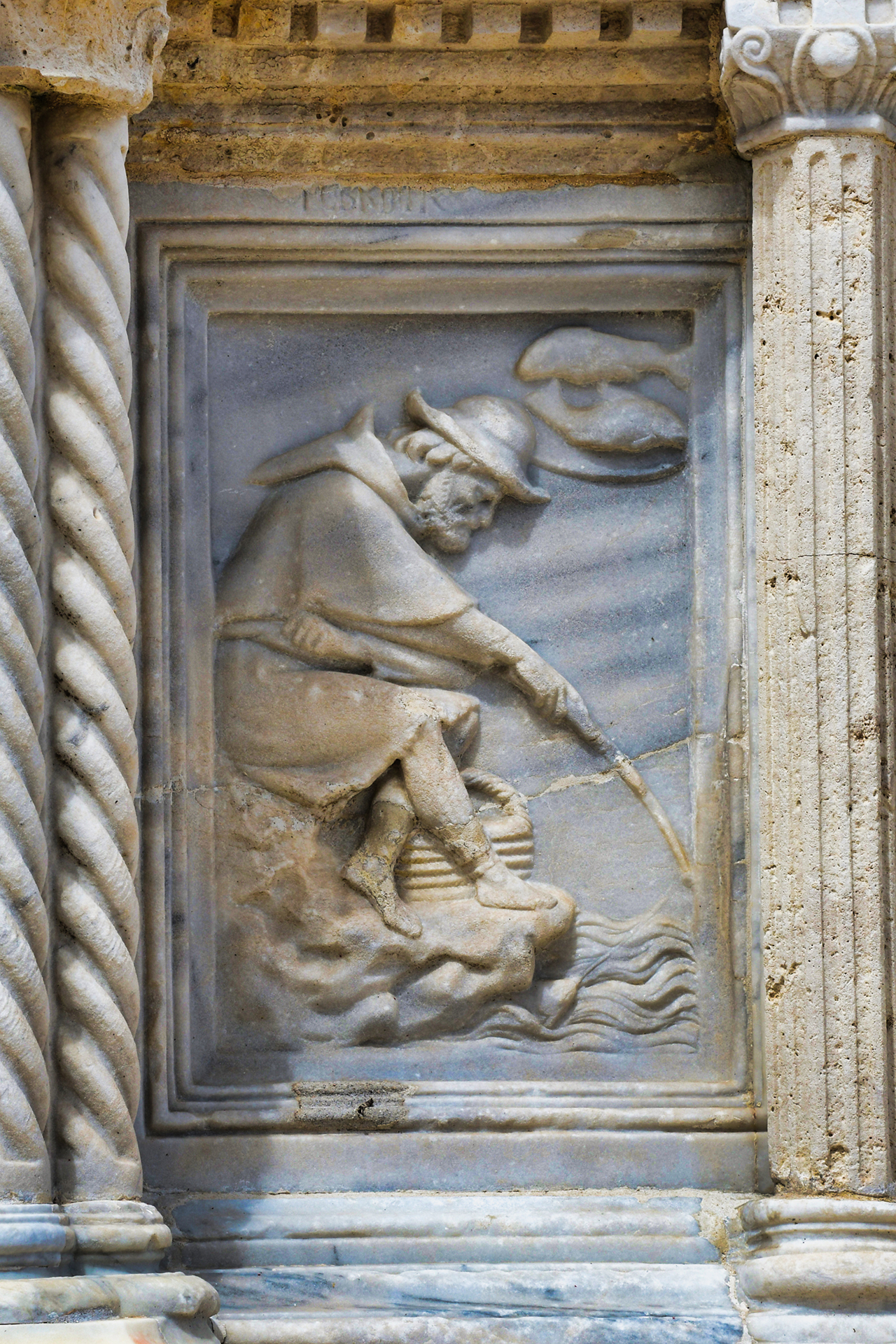
If we want to go from the center of Perugia, from the Fontana Maggiore, to Lake Trasimeno the shortest way is to walk through via dei Priori, exit the walls through Porta Trasimena, or, through Porta S. Susanna (the territory west of Perugia facing the Trasimeno was once called Contado di Porta S. Susanna by the name of the homonymous door). The Porta Trasimena undoubtedly takes its name from Lake Trasimeno because it faces the lake, while the S. Susanna gate takes its name from the nearby church dedicated to Saints Andrea and Susanna (formerly the church was dedicated only to S. Andrea, later the name of S. Susanna was added following the demolition of a church dedicated to her that was located at the current convent of S. Francesco al Prato. Ruins of this ancient church were recently found during the restoration work of the convent). As it happens, St. Andrew is the patron saint of fishermen and therefore it can be said that this door also has a link with the lake.
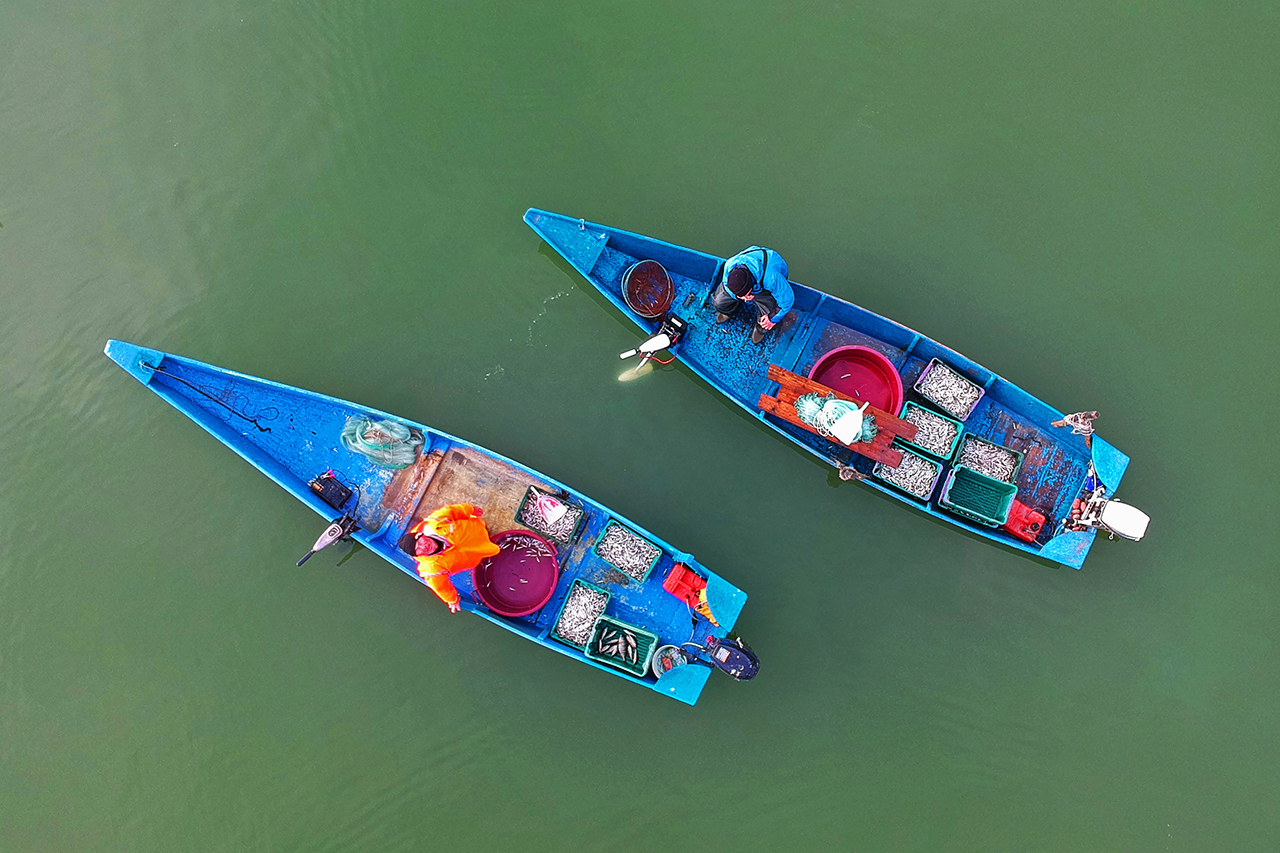
Via del Chiugi. Outside the city we take Via Cortonese and then the motorway junction, leaving at Magione we reach the shore of the lake (Castiglione del Lago and Chiusi), or continuing on the junction we reach the north shore (Passignano sul Trasimeno, Cortona). For a while this road retraces the ancient Etruscan road that once connected the three Etruscan cities (Lucomonie) of Perugia, Chiusi and Cortona, in 1872 underwent changes, in fact, the route of the ancient road at the height of Chiugiana had a fork, on the left it went towards the south shore of Lake Trasimeno, not passing through Magione, but after S. Mariano, through the Vallupina and the Monte Buono pass until touching the shores of the lake at the church of Ancaelle to continue to Castiglione del Lago, Chiusi and Siena, this road was called the Chiugi road (this route was shorter than 5 kilometers relative to the current one), while the other right, remained unchanged, coasting the northern shore of Trasimeno reached Cortona and Arezzo and Florence.
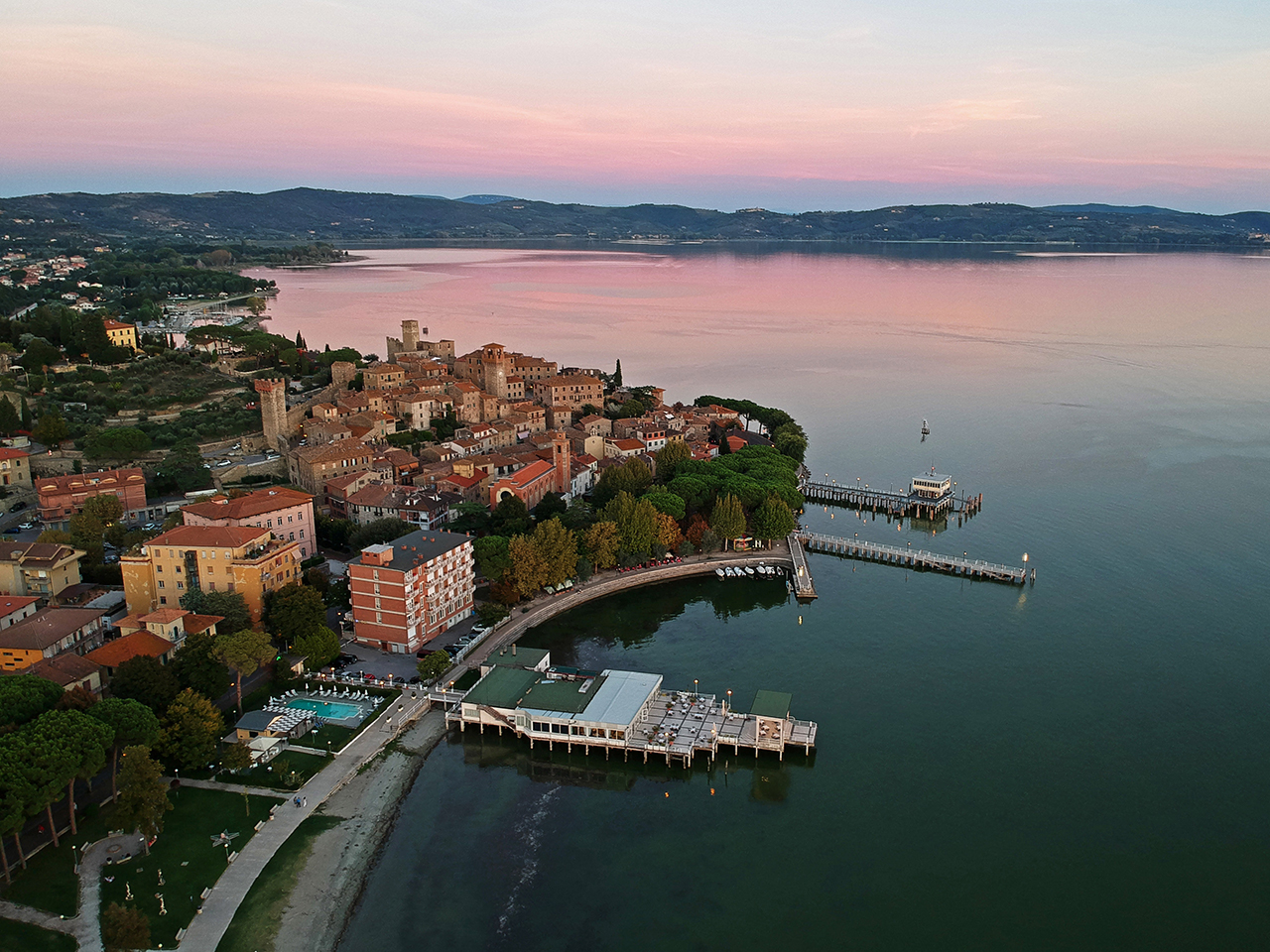
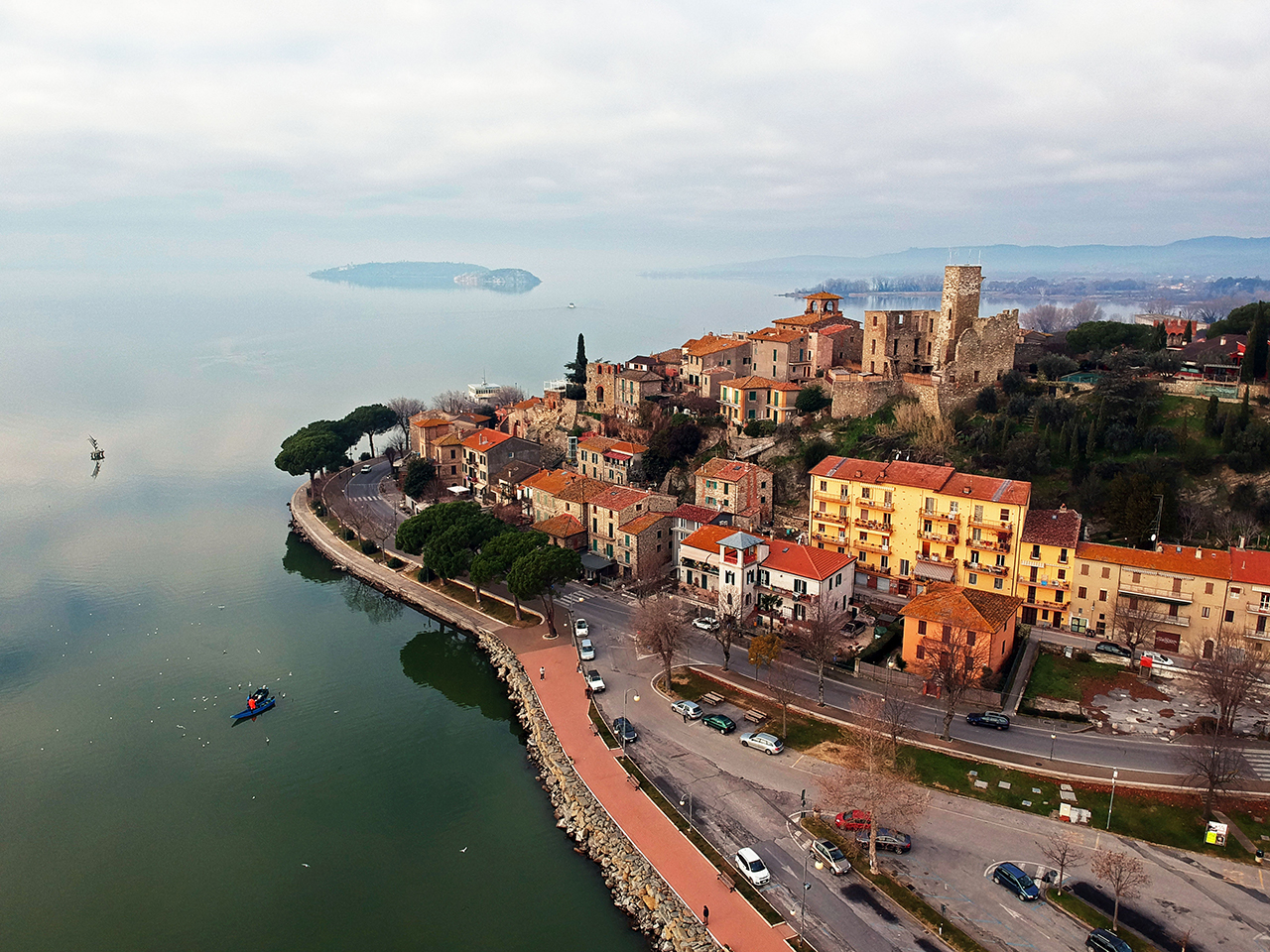
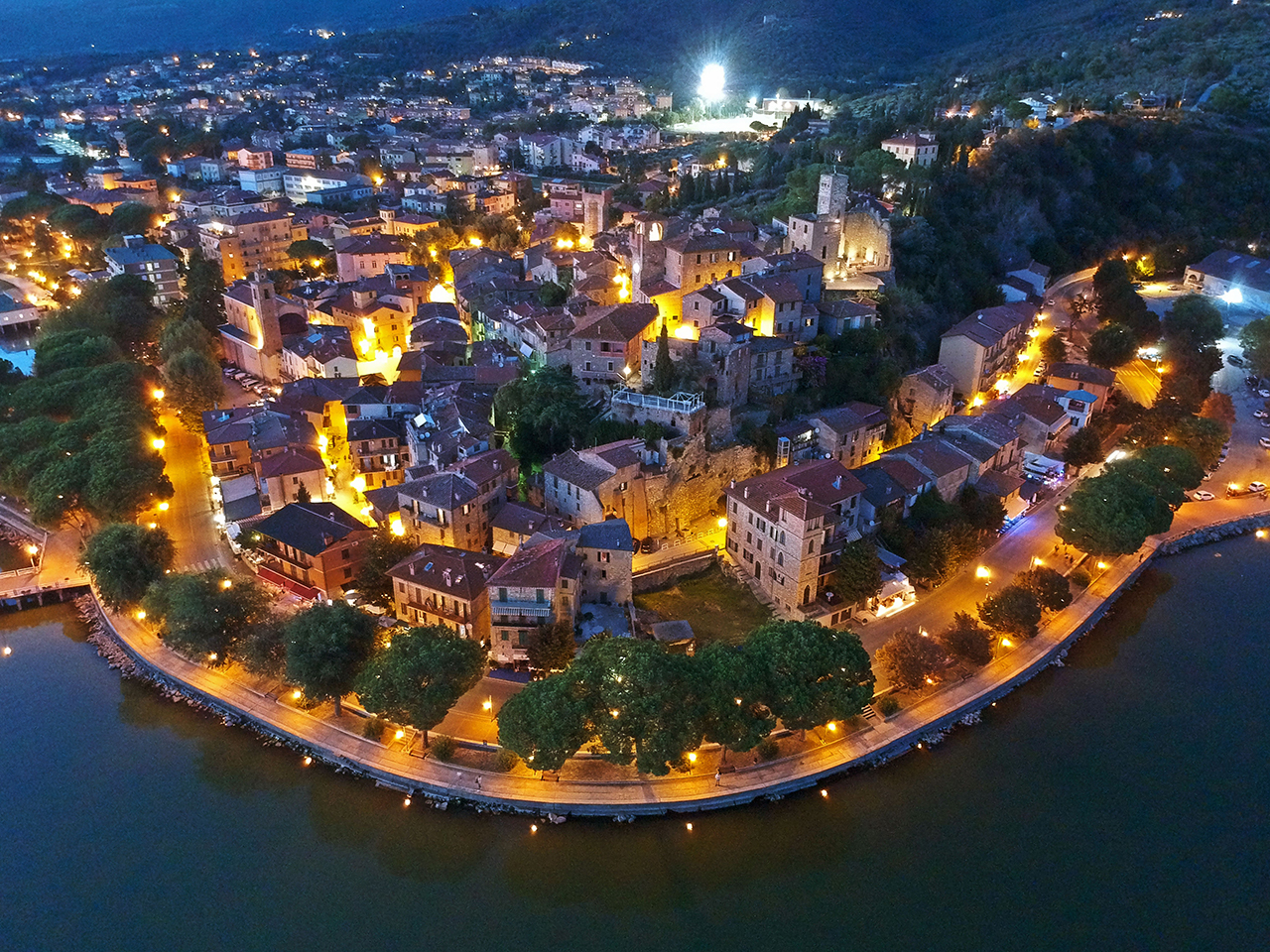
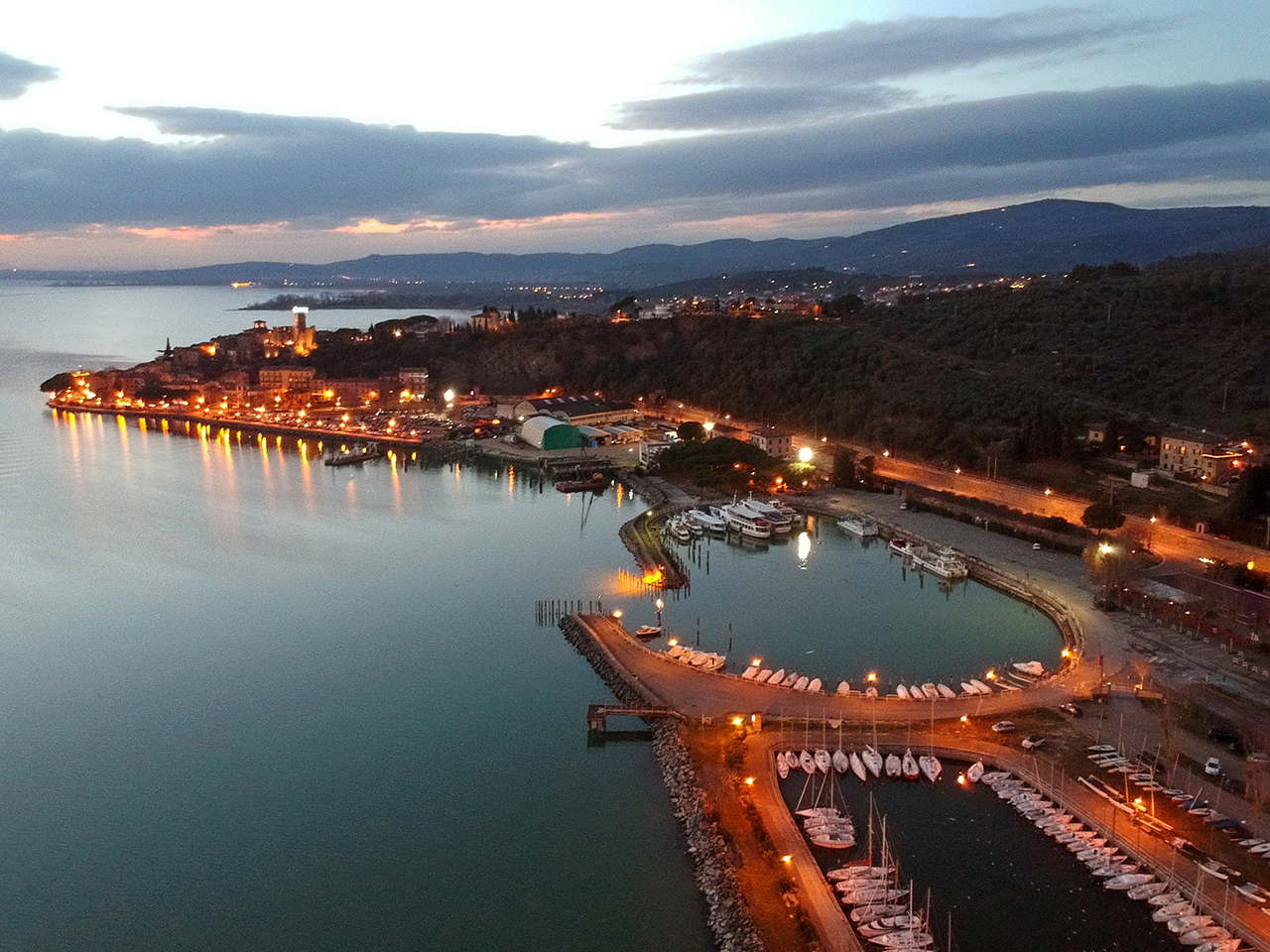
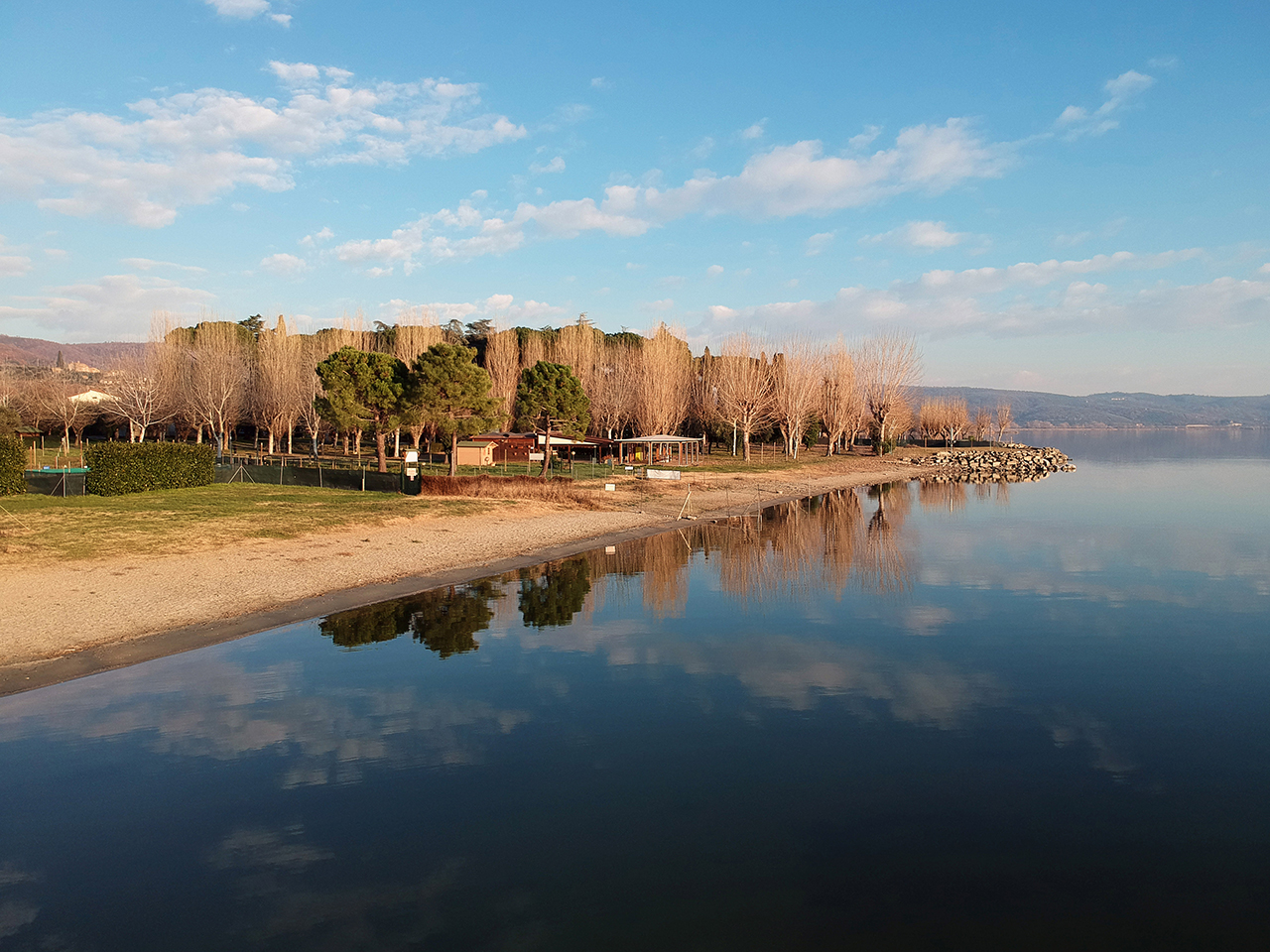
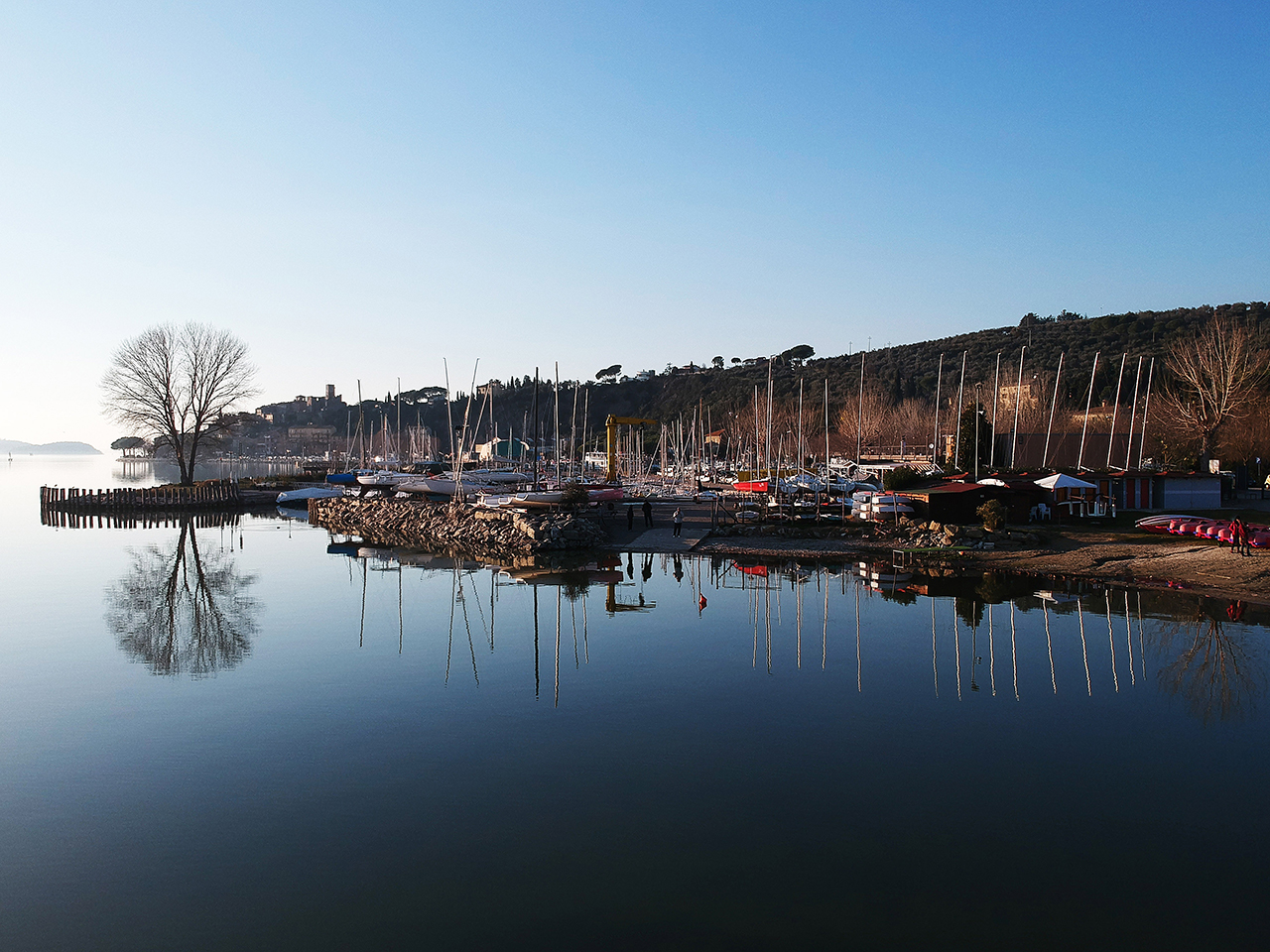
The church of Ancaelle. Located about 3 km from S. Arcangelo, it is a treasure chest, rich in history and art. The origins of the church are attested by its name, traceable to that process of syncretism in which paganism and Christianity coexisted united by the continuity of the sacred. The etymology of the name dates back to the Etruscan Ancaru, to be linked to the Ancaria goddess Etruscan fertility. And in fact, in the inner wall of the apse, there is an Etruscan memorial stone with a phallic representation. The travertine base of the holy water font and a stone bas-relief of a Byzantine Agnus Dei date back to the early Christian period. In the basin of the apse, there is a frescoed Templar cross, while a metal one is above the bell tower. Always frescoed in the apse there are the crucifixion scenes of the thirteenth century and a beautiful St. Sebastian of 1409. Always from the thirteenth century, there is a bell that is located on the bell tower dedicated to the Madonna. Above the altar, there is a beautiful 13th century panel depicting the Madonna and Child in Byzantine style (which recalls the Marzolini triptych preserved at the National Gallery of Umbria, coming from the temple church of S. Bevignate). The painter Giovan Battista Caporali frescoed the main altar with some saints, including St. Joseph who holds a thread with attached the St. Ring preserved in the Cathedral Church of Perugia, surely painted in memory of the passage of the German friar Winterio who in 1473 had stolen the holy ring from Chiusi to bring it to Perugia. Over the centuries this church suffered considerable damage caused by the floods due to the increase in the waters of the lake, interrupted around the year 1520-22 with the construction of the outlet (the outlet is located about 2 km from the church, in the town of S. Savino) wanted by Braccio Fortebraccio (about 3 km towards Chiusi there is the Osteria di Braccio town, an ancient construction perhaps to be reconnected to the commander). The church once owned by Benedictine (linked to the ancient Monastery of St. Archangel), passed in 1471 to the College of Wisdom of Perugia (University of Perugia), in fact, we find carved in stone the emblem of the college so we also find the coat of arms of the municipality of Perugia to seal the bond that binds this church to the city of Perugia and indirectly to the Trasimeno.
